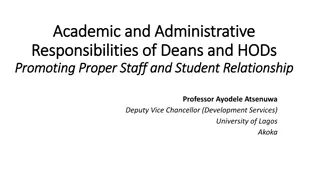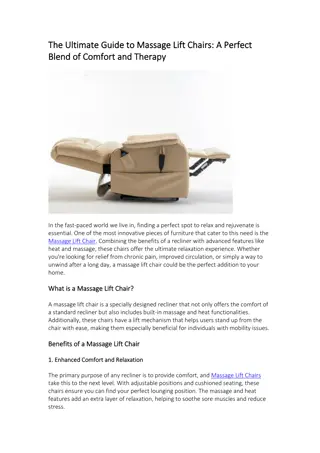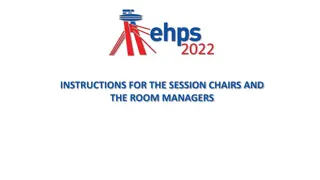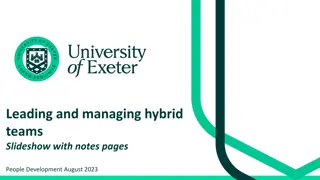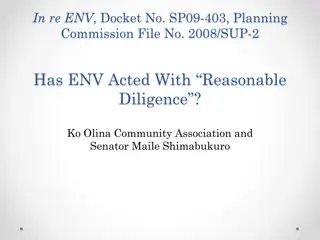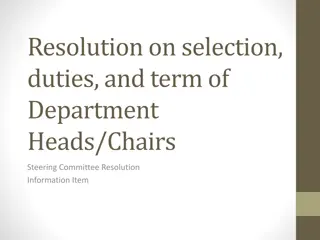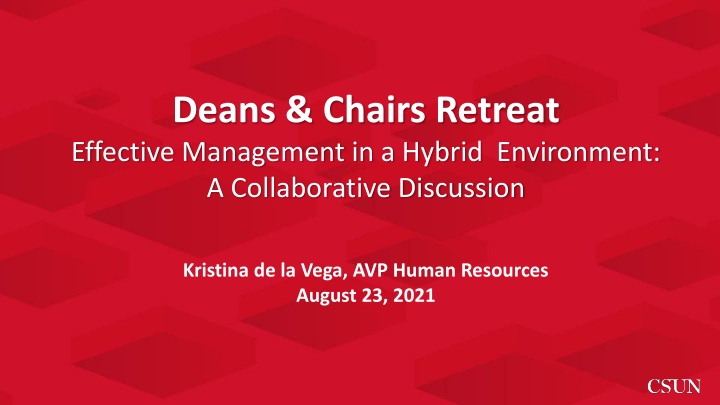
Effective Management Strategies for Hybrid Work Environments
Explore the benefits, challenges, and key factors such as trust, shared expectations, and communication for effective management in a hybrid work environment. Learn how to build a strong team dynamic and enhance productivity in this evolving work setting.
Download Presentation

Please find below an Image/Link to download the presentation.
The content on the website is provided AS IS for your information and personal use only. It may not be sold, licensed, or shared on other websites without obtaining consent from the author. If you encounter any issues during the download, it is possible that the publisher has removed the file from their server.
You are allowed to download the files provided on this website for personal or commercial use, subject to the condition that they are used lawfully. All files are the property of their respective owners.
The content on the website is provided AS IS for your information and personal use only. It may not be sold, licensed, or shared on other websites without obtaining consent from the author.
E N D
Presentation Transcript
Deans & Chairs Retreat Effective Management in a Hybrid Environment: A Collaborative Discussion Kristina de la Vega, AVP Human Resources August 23, 2021
Benefits & Challenges of Telecommuting Benefits of Telecommuting: Increased employee productivity and morale. Reduced employee absenteeism and stress. Extended life of infrastructure. Reduced paper/office supply expenditures. Reduced commuting and food related expenses. Reduced traffic and parking congestion. Improved regional air quality. Reduced waste generation. Challenges of Telecommuting: Increased work hours. Reduced and unclear boundary between work/life Increased interruptions and lack of focus for caregivers. Home office challenges. Loneliness
Trust Trust is formed based on two important beliefs: first, that others will deliver a high quality of work, and second, that others have integrity and good intentions. To build up a significant level of trust in your area, you need to foster transparency between your team members. Give them regular opportunities to connect through video meetings and calls so they can get to know each other and see the steps everyone is taking to get their work done every day. The more conversations your team members can have with each other, the more they will trust each other.
Create Shared Expectations Trust and productivity are built on shared expectations and goals. When everyone on your team is on the same page in terms of projects, next steps, roadblocks and deadlines, they can all work together to achieve anything that needs to be done. Use tools/systems that allows for regular updates with your team. Goal is to create a permanent solution that keeps everyone on the same page and knowledgeable about what they each need to do to foster communication and trust. Make sure plans are flexible to change.
Focus on Communication Use communication tools such as collaboration software that features videoconferencing, instant messaging and automated notifications so you and your team can contact as needed. Establish communication norms and encourage your team to communicate through video calls more often. Foster communication so that everyone feels engaged and knows exactly what they should be doing. Managing a hybrid workforce means allowing for flexibility and trusting your employees to get their work done and to do it well.
Discussion Onboarding Tools /Resources Training

